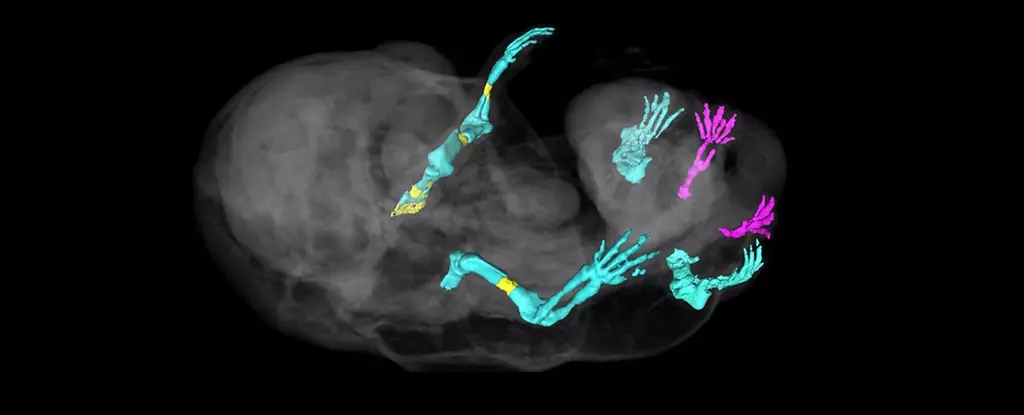In a surprising turn of events, researchers at Portugal’s Gulbenkian Science Institute discovered the unintended consequences of turning off a specific gene early in the development of mouse embryos. This accidental experiment led to the creation of a six-legged embryonic mammal, shedding light on the intricate processes of spinal cord development in mammals.
The research team, led by developmental biologists Anastasiia Lozovska and Moisés Mallo, focused on the Tgfbr1 gene, which codes for the Tgfbr1 receptor protein. This gene plays a crucial role in a signaling pathway that provides directional cues for the formation of a developing body, particularly in the trunk-to-tail region. By comparing mouse embryos with and without functional Tgfbr1 genes, the scientists were able to pinpoint the effects of gene suppression on embryonic development.
During the early stages of mammalian embryo development, genetic mechanisms govern the sequential formation of structures from head to tail. As the embryo transitions from focusing on head development to extending the body and laying the foundation for major organ systems, critical interactions between different tissues guide the process. It is during this period that the formation of hindlimbs and external genitalia is orchestrated, with shared genetic pathways between the two structures.
The researchers were surprised to find that despite the abnormal positioning of the extra pair of legs in the gene-suppressed embryos, the genetic expression in these limbs mirrored that of normal mouse limbs. Both the additional limbs and the original limbs emerged from the mesoderm layer of the embryo, suggesting a common developmental origin. The researchers attribute the abnormal limb development to changes in chromatin remodeling, which altered the configuration of DNA access proteins in the mutant leg tissue.
The accidental discovery of the six-legged mouse embryo has opened up new avenues for studying the fundamental processes of embryonic development. By unraveling the mechanisms underlying gene suppression and its effects on limb formation, researchers can gain valuable insights into developmental plasticity and the regulation of key developmental pathways. This knowledge could prove instrumental in addressing developmental challenges and diseases in both humans and other mammals.
The unexpected results of gene suppression in mouse development highlight the intricate interplay of genetic pathways and tissue interactions during embryonic development. This groundbreaking research sheds light on the potential for developmental plasticity and the role of key genes in shaping mammalian development. Further studies are needed to fully understand the mechanisms at play and to harness this knowledge for therapeutic interventions in developmental disorders.


Leave a Reply